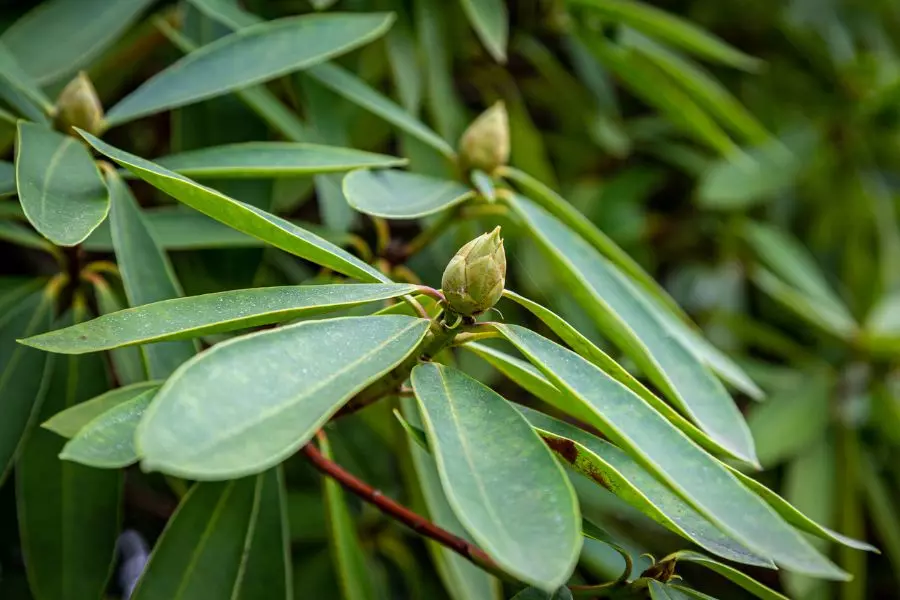7 Reasons Your Rhododendron Is Turning Brown
When your rhododendron starts turning brown, it’s a clear sign that something is wrong

Rhododendrons are beloved for their vibrant blooms and lush green foliage, making them a popular choice for gardens. However, when your rhododendron starts turning brown, it’s a clear sign that something is wrong. Browning leaves or flowers can be caused by several factors, ranging from environmental stress to pests or diseases.
In this article, we’ll explore the most common reasons why rhododendrons turn brown and provide solutions to help you restore their health and beauty.
Common Reasons Why Rhododendrons Turn Brown
1. Drought Stress
Rhododendrons are shallow-rooted plants that require consistent moisture. If they don’t get enough water, their leaves may turn brown and dry out.
Signs:
- Browning starts at the leaf tips or edges.
- Leaves may curl or droop before turning completely brown.
- Soil is dry or compacted.
Solution:
- Water deeply and consistently, especially during hot, dry weather.
- Apply mulch around the base to retain soil moisture and protect roots from drying out.
2. Overwatering and Poor Drainage
While rhododendrons need moisture, overwatering or waterlogged soil can be just as harmful. Excess water can suffocate roots and lead to fungal root rot.
Signs:
- Browning appears on lower leaves first.
- Leaves may feel soft or wilted.
- Soil is consistently wet or soggy.
Solution:
- Ensure the soil drains well. Amend heavy clay soil with organic matter to improve drainage.
- Water only when the topsoil feels dry to the touch.
3. Frost Damage
Victoria’s mild winters are generally kind to rhododendrons, but sudden cold snaps or frost can damage leaves and flowers.
Signs:
- Browning on leaves or flower buds exposed to the cold.
- Damage appears after a frost or unusually cold weather.
Solution:
- Protect rhododendrons during cold spells by covering them with burlap or frost cloth.
- Prune damaged foliage in spring to encourage healthy new growth.
4. Leaf Scorch from Sun Exposure
Rhododendrons thrive in partial shade. Too much direct sunlight can scorch their leaves, causing them to turn brown.
Signs:
- Browning occurs on leaves exposed to the sun.
- Leaves may appear faded or have sunburn-like patches.
Solution:
- Relocate the plant to a spot with morning sun and afternoon shade.
- Provide shade during peak sunlight hours if relocating isn’t possible.
5. Nutrient Deficiency
Rhododendrons require acidic soil and adequate nutrients to thrive. A lack of essential nutrients can cause browning or yellowing leaves.
Signs:
- Browning occurs alongside yellowing or pale leaves.
- Growth may be stunted, and blooms may be sparse.
Solution:
- Test the soil’s pH and ensure it is between 4.5 and 6.0.
- Fertilize with a product designed for acid-loving plants, applied in spring and early summer.
6. Pests and Diseases
Several pests and diseases can cause rhododendrons to turn brown. Common culprits include:
- Lace Bugs: Tiny insects that feed on the underside of leaves, causing them to turn brown or mottled.
- Root Rot: A fungal disease caused by poorly draining soil.
- Powdery Mildew: Fungal growth that can weaken the plant and cause browning.
Signs:
- Brown patches, webbing, or discoloration on leaves.
- Fungal growth or blackened roots in the soil.
Solution:
- Treat pests with insecticidal soap or horticultural oil.
- Address fungal diseases with fungicides and improved drainage.
- Remove severely affected leaves or branches to prevent spread.
7. Improper Pruning or Damage
Improper pruning or physical damage to the plant can also cause browning.
Signs:
- Browning near pruning cuts or damaged branches.
- Poor regrowth after pruning.
Solution:
- Prune with clean, sharp tools immediately after flowering.
- Avoid cutting into the main stems or removing too much foliage at once.
Preventing Browning in Rhododendrons
To keep your rhododendron healthy and prevent future browning, follow these tips:
- Choose the Right Location: Plant rhododendrons in partial shade with well-draining, acidic soil.
- Water Consistently: Maintain even moisture without overwatering.
- Fertilize Appropriately: Use fertilizers specifically designed for rhododendrons and other acid-loving plants.
- Monitor for Pests and Diseases: Check leaves and roots regularly and address issues promptly.
- Prune Correctly: Remove dead or damaged branches and shape the plant immediately after flowering.
- Protect from Extreme Weather: Use mulch, burlap, or shade cloth as needed to shield the plant from frost or excessive sun.
When to Seek Professional Help
If your rhododendron continues to decline despite your efforts, it may be time to consult a professional. A skilled gardener or arborist can:
- Diagnose the root cause of the problem.
- Treat severe pest infestations or diseases.
- Provide expert advice on soil, watering, and overall care.
Restore Your Rhododendron with Ascent Yard Care
Rhododendrons are a valuable part of your garden, and with proper care, they can thrive for years. If your rhododendron is turning brown, Ascent Yard Care is here to help. Our expert team specializes in plant care, pruning, and pest management to keep your garden healthy and beautiful.
Contact Ascent Yard Care today for professional gardening services in Victoria, BC, and let us help your rhododendrons flourish!
